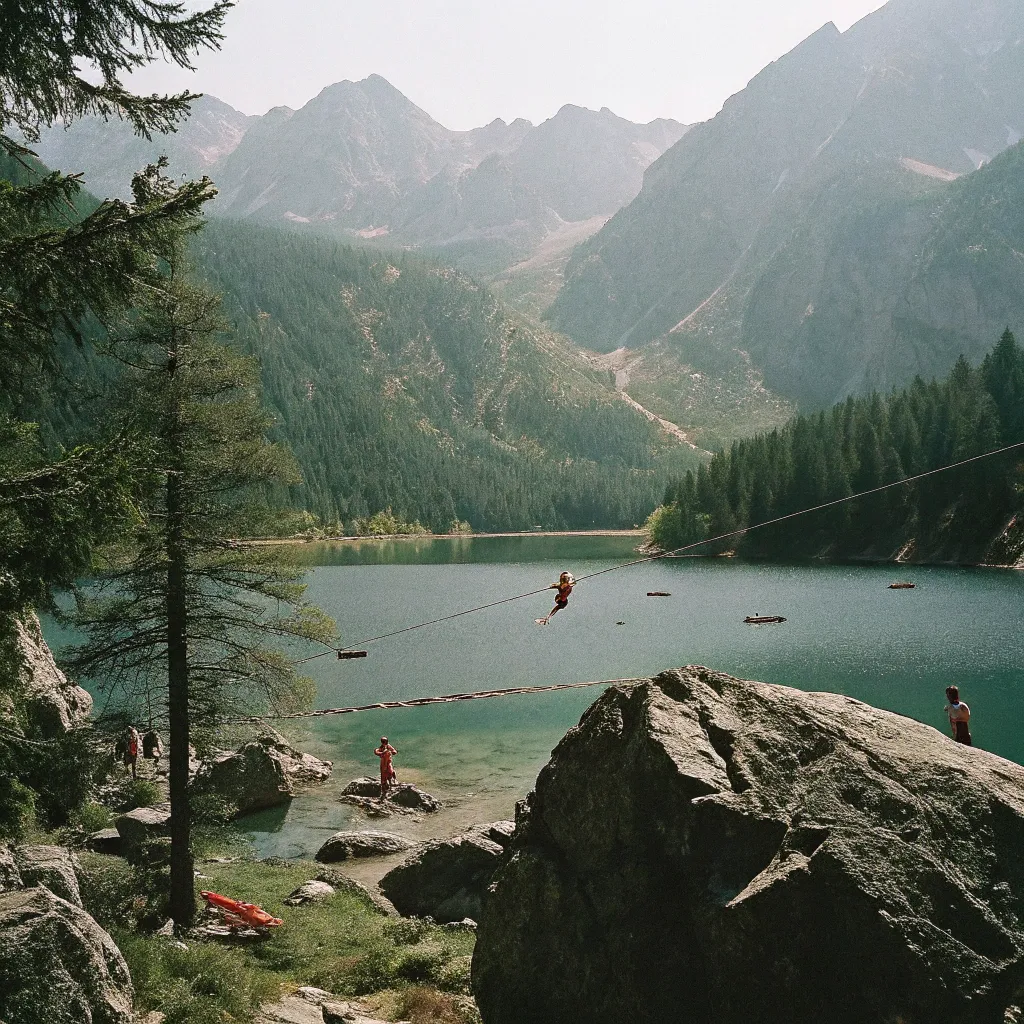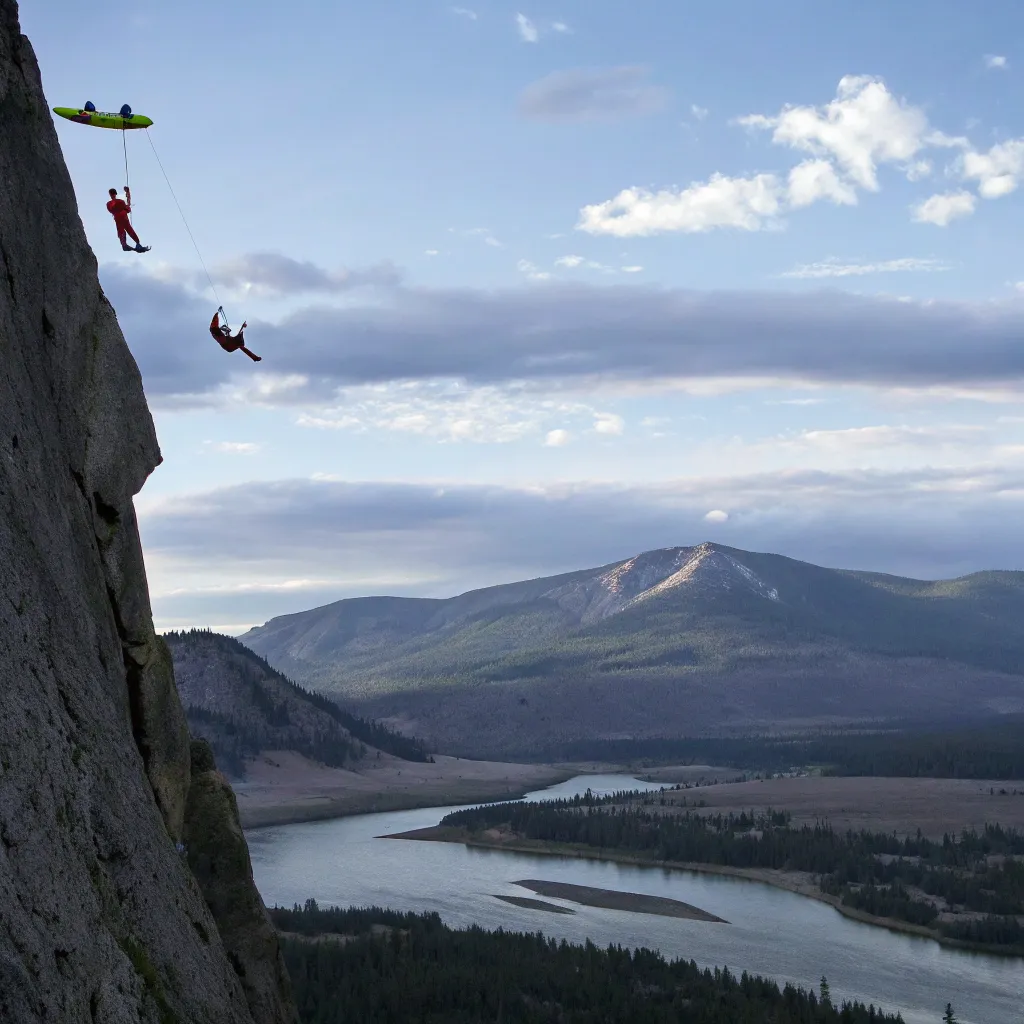Ever found yourself scrolling through Instagram, eyeing those adrenaline-pumping adventures while sitting on your couch? Maybe you've booked trips before only to return home feeling like you missed out on the real excitement. Creating an itinerary that actually delivers thrills isn't just about picking random activities—it's about crafting an experience that matches your energy levels and adventure appetite.
Understanding Your Adventure Style
Before jumping into booking bungee jumps and helicopter tours, take a moment to understand what kind of adventure seeker you really are. This isn't about fitting into a box but recognizing your personal thrill threshold.
Some travelers are what experts call "High Sensation Seekers" (HSS)—people who crave novelty, intensity, and complexity in their experiences. According to research highlighted on HSPerson.com, these individuals actively pursue varied, novel, complex, and intense sensations and experiences, often willing to take physical and social risks to obtain them.
"I used to plan trips thinking I wanted extreme adventures, but I'd end up exhausted and not enjoying half of what I scheduled," admits travel consultant James Mercer. "Learning to be honest about my actual energy levels completely transformed how I travel."

Your adventure style might include:
- Pure adrenaline junkie (skydiving, white water rafting, cliff jumping)
- Cultural explorer (immersive local experiences, off-the-beaten-path discoveries)
- Physical challenger (hiking difficult trails, mountain climbing)
- Nature enthusiast (wildlife tracking, wilderness camping)
Sometimes it's a mix—and that's perfectly fine. The key is honesty about what genuinely excites you versus what you think should excite you.
Matching Energy Levels to Activities
One of the biggest mistakes in planning high-energy itineraries is ignoring your body's natural rhythms. Are you a morning person who's ready to tackle a mountain at dawn? Or do you hit your stride in the afternoon?
According to adventure travel specialists at PanExplore, scheduling activities to align with your natural energy peaks dramatically improves the experience. Their research with sailing adventures shows participants report 40% higher satisfaction when challenging activities align with their personal energy cycles.
Consider creating an energy map of your typical day:
- Early morning (6-9am): High/Medium/Low energy?
- Mid-morning (9am-12pm): High/Medium/Low energy?
- Afternoon (12-4pm): High/Medium/Low energy?
- Evening (4-8pm): High/Medium/Low energy?
- Night (8pm+): High/Medium/Low energy?
Then match your most demanding activities to your high-energy periods. Save relaxation, scenic drives, or casual exploration for your lower-energy times.
Crafting Your Adventure Framework
Now that you understand your adventure style and energy patterns, it's time to build your framework. Think of this as the skeleton of your trip—you'll add flesh to these bones later.
The 3-1-3 Method
Many adventure travel experts recommend the 3-1-3 approach:
- 3 days of high-intensity activities
- 1 day of rest/recovery/reflection
- 3 days of moderate activities
This rhythm prevents burnout while maintaining excitement throughout your journey. It's especially useful for trips lasting a week or longer.
"The recovery day isn't about doing nothing," explains adventure blogger Samantha Torres. "It's about switching gears—maybe exploring a local market, enjoying a leisurely meal, or simply taking photographs of the landscape you've been too busy experiencing to actually see."
Location Clustering
Another strategy is geographical clustering. Rather than zigzagging across a destination, group activities by location to minimize transit time and maximize adventure time.
For example, when planning an Iceland itinerary, you might dedicate days 1-2 to southern coast adventures, day 3 to Reykjavik experiences, and days 4-5 to northern explorations. This approach reduces the fatigue of constant relocation and allows deeper immersion in each area.
What Makes an Activity Truly "High-Energy"?
Not all adventures are created equal. A truly high-energy activity typically combines several elements:
- Physical engagement - Activities requiring strength, endurance, or coordination
- Mental stimulation - Experiences that demand focus, problem-solving, or learning
- Emotional intensity - Moments that create fear, excitement, wonder, or joy
- Sensory richness - Environments with powerful sights, sounds, smells, or textures
- Novelty factor - Experiences unlike your everyday life
The best high-energy itineraries include activities hitting multiple dimensions. Paragliding, for instance, combines physical challenge with emotional intensity and sensory richness. A cooking class with local foraging might blend mental stimulation with sensory experiences and novelty.
How Do I Know If I'm Planning Too Much?
This is where many adventure seekers go wrong. The excitement of planning leads to overscheduling, resulting in exhaustion rather than exhilaration.
Travel writer Declan Chapin suggests on his travel website a simple rule: "For every high-intensity activity, allocate twice the activity duration for the entire experience including transit, preparation, and recovery."
For example:
- 2-hour white water rafting = 4-hour time block
- 3-hour mountain bike trail = 6-hour time block
- Full-day glacier hike = Full day plus morning of following day
This approach prevents the dreaded adventure burnout that happens when travelers underestimate the full time commitment of high-energy activities.
What About Spontaneity?
The best adventure itineraries balance structure with flexibility. Rather than scheduling every minute, consider using the 70/30 approach:
- 70% planned activities (with reservations where needed)
- 30% unscheduled time for discoveries, rest, or spontaneous adventures
"Some of my most memorable adventures happened when my planned activity got canceled due to weather," shares travel photographer Marco Reyes. "The local guide suggested an alternative I'd never heard of, and it became the highlight of my trip."
How Should I Prepare My Body for a High-Energy Trip?
This question deserves more attention than it typically gets. If you're planning a physically demanding adventure itinerary, preparation should begin weeks before departure.
According to adventure fitness coach Elena Mikhailova:
- Start conditioning at least 6 weeks before your trip
- Focus on the specific fitness elements your activities require (endurance, strength, balance)
- Practice with your gear if activities require specialized equipment
- Gradually increase intensity to avoid injury
- Don't forget mental preparation—research what to expect
"I see too many clients who plan incredible adventures but can't fully enjoy them because they're physically unprepared," Mikhailova notes. "Even two 30-minute sessions per week of targeted exercise can dramatically improve your experience."
Building Your Day-by-Day Plan
Now it's time to put everything together into a concrete itinerary. Let's look at a sample 7-day high-energy itinerary for a coastal/mountain destination:
Day 1: Arrival & Gentle Introduction
- Morning: Arrival, check-in, orientation
- Afternoon: Coastal hiking on moderate trails (2-3 hours)
- Evening: Local seafood dinner, sunset viewing
Day 2: Water Adventure Day
- Early morning: Sunrise beach yoga (energizing)
- Morning: Sea kayaking expedition (3 hours)
- Afternoon: Snorkeling or introductory scuba
- Evening: Relaxed dinner, plan next day details
Day 3: Mountain Challenge
- Full day: Guided mountain trek with summit picnic
- Evening: Recovery massage, hearty dinner
Day 4: Cultural & Recovery Day
- Morning: Local market exploration, cooking class
- Afternoon: Optional light activities or relaxation
- Evening: Cultural performance or dining experience
Day 5: Adrenaline Day
- Morning: Zip-lining or paragliding experience
- Afternoon: Mountain biking on intermediate trails
- Evening: Campfire stories, stargazing
Day 6: Water & Wildlife Day
- Morning: Wildlife boat tour or fishing expedition
- Afternoon: Stand-up paddleboarding or surfing lesson
- Evening: Beach barbecue, sunset swim
Day 7: Culmination & Departure
- Morning: Sunrise farewell activity (beach run, yoga, or meditation)
- Mid-morning: Souvenir shopping, packing
- Afternoon: Departure
Notice how this itinerary follows the energy management principles discussed earlier—alternating high-intensity days with more moderate ones and scheduling the most challenging activities (mountain trek, adrenaline day) with recovery periods afterward.
The Bottom Line: Your Adventure, Your Rules
The most important aspect of building a high-energy itinerary is making it authentically yours. While Instagram might suggest that rappelling down waterfalls is the ultimate adventure, perhaps for you, it's mastering surfing or tracking wildlife at dawn.
As one Reddit user in a career guidance thread aptly put it when discussing adventurous lifestyles: "High risk, high reward, and you get to travel to some wild places." The same philosophy applies to travel planning—the rewards come when you take the risk to pursue what truly excites you, not what excites others.
Your perfect high-energy itinerary should leave you exhilarated, not exhausted; challenged, not overwhelmed; and with stories to tell, not regrets about what you couldn't handle.
So go ahead—build that bucket-list adventure. Just make sure it's actually your bucket.






